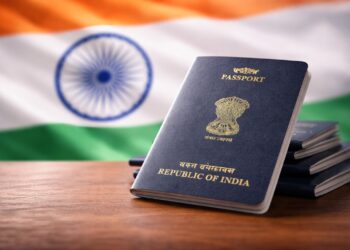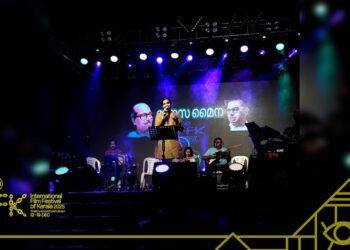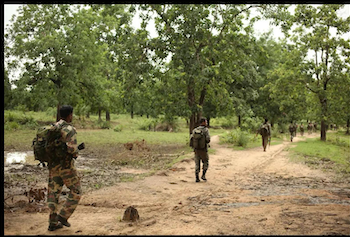An analysis of Census cultural diversity statistics finds that India has contributed over one-fourth of all foreign arrivals to Australia since 2016, making it the nation with the fastest rate of growth.
In the previous five years, India has surpassed China and New Zealand to rank second only to England in the list of countries of birth for people born abroad, as the percentage of foreign-born in Australia climbs swiftly towards 30% of the overall population.
The Australian Bureau of Statistics study Cultural Diversity of Australia states that a little over 7 million Australians were citizens by birth abroad in August 2021. In comparison to China’s 550,000 and New Zealand’s 530,000, India has 673,000, whereas, it was 927,000 in England.
New Zealand had 5180,00 people, China had 510,000, and India had 455,000 according to the most recent census in 2016. The data shows that Punjabi, with 107,000 more speakers in 2021 than in 2016, or an increase of 80.4%, was the fastest-growing foreign language in households across the nation.
First generation Australians are people living in Australia who were born overseas. In the 2021 Census, there were 673,000 Indian-born (i.e. first generation) Australians, representing 2.6% of the Australian population. India was the second most common overseas country of birth and between 2016 and 2021, the number of Indian-born Australians increased by 47.9%, which was the highest increase in country of birth. The Indian-born Australian population experienced rapid recent growth, with 28.8% arriving between 2016 and 2021, and 24.4% between 2012 and 2016.
Most Indian-born Australians lived in Victoria (38.3%), followed by New South Wales (31.0%) and Queensland (10.7%). Indian-born Australians reported 159 ancestries, with the top three being Indian (69.7%), Punjabi (12.4%) and Sikh (6.4%). People could provide up to two ancestry responses on the Census form, so the sum of responses will not equate with the total number of people.
Almost 90 languages were used at home by Indian-born Australians, with the top two being Punjabi (26.4%) and Hindi (18.8%). One in eight Indian-born Australians used only English at home (13.4%). Most Indian-born Australians reported being proficient in English (95.8%), while 4.2% reported using English not well or not at all.
Among the 87 religions reported by Indian-born Australians, the top three were Hinduism (51.0%), Sikhism (22.1%) and Western Catholic (9.6%).
Almost three quarters (74.6%) of Indian-born Australians were aged between 20 and 49 years. There was a greater proportion of Indian-born Australians (61.7%) aged 25 to 44 years than the total Australian population (28.0%). Over half of these Indian-born Australians were male (53.8%).
The most reported ancestries of second-generation Australians with at least one Indian-born parent were Indian (64.5%), Australian (14.0%), English (11.2%), Punjabi (10.9%) and Sikh (5.9%).
Over a third reported their religious affiliation with Hinduism (36.4%), while a fifth reported Sikhism (20.7%), 13.5% as Western Catholic and 12.3% with No religion.
The most reported languages used at home by second-generation Australians with at least one Indian-born parent were Punjabi (21.1%), Hindi (8.7%), Gujarati (6.5%) and Malayalam (5.3%). More than two out of every five Australians with an Indian-born parent used only English at home (41.8%).
Of all third-plus generation Australians, 14,000 reported an Indian-related ancestry. Third-plus generation Australians are Australian-born people whose parents were also born in Australia but one or more of their grandparents or ancestors may have been born overseas. The most reported religious affiliations of third-plus generation Australians with an Indian-related ancestry were No religion (44.6%), Western Catholic (28.5%) and Anglican Church of Australia (6.9%).
English was the most reported language used at home (94.9%). Most (65.3%) were aged under 20 years.
According to the survey, while the percentage of Australians who were born abroad overall was 18% in the first census in 1911, it “fell to a low of 9.8 per cent from 1911 to 1947 as migration was disrupted by two World Wars and two severe economic depressions.”
Because of the post-war migration policy, which included admissions of displaced individuals and refugees from European nations, the percentage of people who were born abroad that were counted in the Census surged, starting in 1947.
It states that changes to Australia’s immigration policy, especially a rise in the admission of skilled migrants, have caused a sharper increase in the proportion of people who were born abroad since 2006.
There are parts of Australia where the proportion of foreign-born residents is substantially greater than the national average of slightly under 30%. The highest statistical area in the nation is Auburn in New South Wales (62%), followed by Dandenong in Victoria (56%). Sydney’s Fairfield and Parramatta had the following highest percentage.











